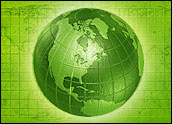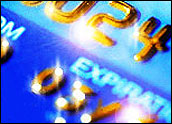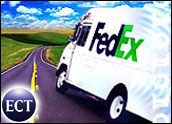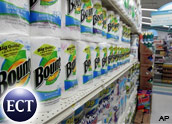
For public utilities, the world seems to be taking on a green hue.
Green, as in trees. Green, as in money.
Their customers are the beneficiaries of an effort to preserve resources — and save a bit of cash in the process — as they move toward electronic bill payment, have their lights dimmed automatically, and place orders online.
For example, Richmond, Va.-based Dominion Virginia Power has launched an initiative that encourages customers to participate in the company’s electronic billing and payment plan: For every new enrollment in September and October, Fiserv-owned CheckFree makes a US$1 donation to the utility’s Project Plant It! program, a community effort to educate children, plant trees and improve the environment.
“This partnership benefits Dominion customers, Virginia students and the environment by providing a convenient, economic method for paying bills that does not require paper, postage or the harvesting of trees,” said William C. Hall Jr., spokesperson for the utility.
More than 375,000 of Dominion’s customers currently pay their bills electronically through the electronic billing and payment services of CheckFree. The utility points to a Javelin Strategy and Research study estimating that 16.5 million trees could be spared each year if all U.S. households paid bills online.
Others Getting Involved
The Virginia utility is not alone. New York’s largest power company, Con Edison, is in the midst of a similar green campaign.
“We’re members of the [PayItGreen Alliance], and right around May of last year, we initiated a comprehensive effort to try to migrate customers to electronic billing,” George Roach, a systems specialist with the utility, told CRM Buyer. “Customers were asking about it. We knew it would have a positive impact on the environment.”
Con Ed also launched a program promoting e-billing by promising to donate $1 to Trees New York for each customer who signs up.
“In addition, we developed a comprehensive multifaceted campaign to make our customers aware,” Roach said.
Con Ed has sent out e-mails, run radio advertisements, and even had a banner ad at Yankee Stadium proclaiming the advantages of e-billing, Roach said.
“Through the end of August, we realized a 50 percent increase in customer enrollment [in e-billing],” he noted. “Customers are responding.”
The company also ran promotions with iPhones as prizes.
“Every time you run into one of these promotions, customers say they were thinking about [e-billing] and read about it,” Roach said. “They were going to do it anyway, so why not do it now?”
Con Ed estimates that it has enrolled about 6,500 customers per month in its e-billing program since May 2007.
“We’re not mailing their bill or envelope on paper and, correspondingly, generally when a customer sees a bill electronically, they’re paying it electronically,” Roach said. “They’re not mailing a check. So, there’s no envelope or postage.”
About 900,000 of the utility’s 3.2 million customers were enrolled, according to the latest count, Roach said.
“We want to put together an educational program,” he commented, referring to Con Ed’s association with the PayItGreen Alliance. “We felt that making customers realize they could actually have an impact on the environment was very important.”
There are some less-visible powers behind the utilities’ go-green initiatives.
One company, San Jose, Calif.-based Echelon, has a control network platform called “LonWorks” that uses smart devices to sense, monitor and control power in individual buildings and entire municipal grids.
For example, Echelon has more than 27 million smart electricity meters in Italy, and the technology is making its way across the globe, city by city, said Steve Nguyen, the company’s director of corporate marketing.
Investment Paying Off
An investment in the amount of 2 billion euros (US$2.7 billion) is now bringing in 500 million euros (about $750 million) every year, said Nguyen.
“Pretty much anything that involves sensing and monitoring involves our technology,” he told CRM Buyer. “Every subway train in New York City has a LonWorks network in it. Most of the automated car washes are a running LonWorks network. Pitch control on Apache attack helicopters have LonWorks technology.”
Echelon’s technology is found all over the world, Nguyen continued, including in The Louvre,Tokyo’s Ropponghi Hills, Seoul’s World Cup football stadium, Ariston Digital washing machines, The Goddard Space Flight Center’s shuttle building, and the Sears Tower in Chicago.
The technology helps cities save energy by controlling street lights and electricity grids, he said, and it can do the same for individual homes and buildings.
“This is just the beginning of the revolution — one that can deliver worldwide benefits by saving energy, improving lifestyles and creating healthier environments,” he added. “It’s a matter of making things smart around us.”
The technology can be programmed to dim or eliminate lights and dial down air-conditioning or heating systems in rooms or buildings that aren’t used during certain periods, Nguyen explained.
“Where it’s hot in California during the day, the load on the grid is tremendous, and that’s usually expensive,” he said. “Our building can save 30 percent on demand, but we’ve knocked our consumption down up to 40 percent.”
Smart systems help to mitigate the danger of rolling blackouts, Nguyen pointed out, by making sure buildings don’t consume too much electricity.
Cities are getting into smart street lighting, and it’s paying off as well, Nguyen said.
“Street lighting is an interesting area, because 40 percent of a city’s electric bill is street lights,” he said. “All those lights are on, and no one is home. So, we’re working with a number of cities. There’s some intelligence built into the lamp. There’s no reason to have 100 percent daylight at street level if there’s not a car around. Those should be dimmed.”
The Web a Key Tool
Web-hosting companies are getting involved in the green movement in the areas of e-billing, bank transactions and online ordering.
“What we’re seeing most in our customers is when they’re going online, things like transferring one account to another, opening a new account, applying for a consumer loan — all these things have historically required mountains of paperwork,” Wade Arnold, president of Cedar Falls, Iowa-based T8 Design, told CRM Buyer.
“That’s all going to a digital format,” Arnold said. “As soon as it’s submitted, it starts that workflow process. Traditionally they’d fill out all this paperwork, and it would then be scanned and digitized.”
Cedar Falls Utilities, a local company that provides electricity, natural gas, water, high-speed Internet and cable television services to a community of more than 37,000 customers, has recognized the need to mainstream high-speed online connections as part of the green movement, said Arnold.
“CFU’s doing some things to make our bandwidth possibly 10 times faster,” he noted. “They’re going to be reinvesting into this community and getting us ready for the next 50 years.”
Smart networks and the Web are a natural marriage, remarked Nguyen.
“From my desktop, I can let my lights go down to 20 percent, if needed, and let my heating or cooling temp change a couple of degrees,” he said. “I set it once and I’m done.”
Implementing this type of technology is a no-brainer for any utility looking to save money and resources, according to Nguyen. “It’s low-lying fruit,” he said. “It’s such a simple thing to do.”


















































Social CRM
See all Social CRM